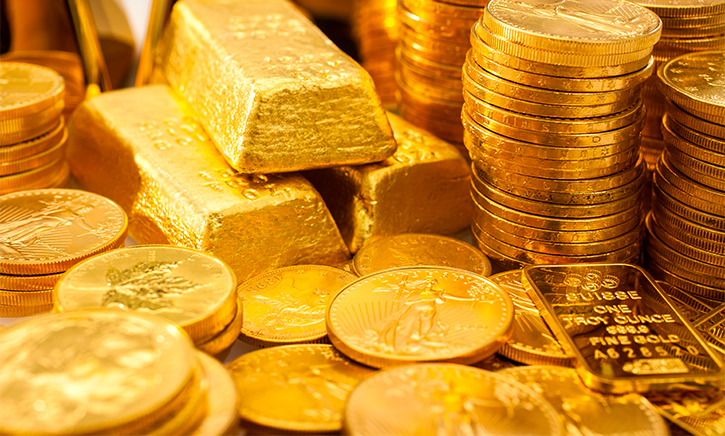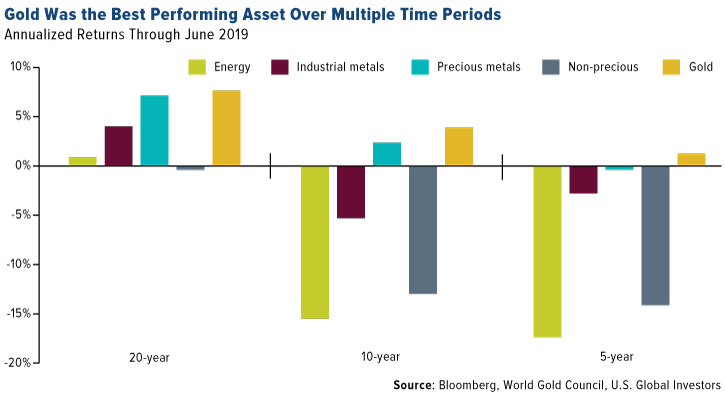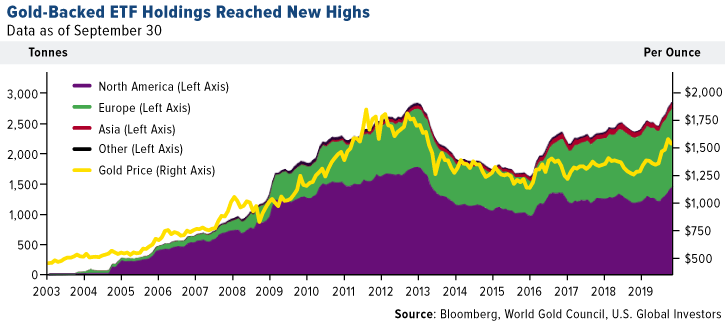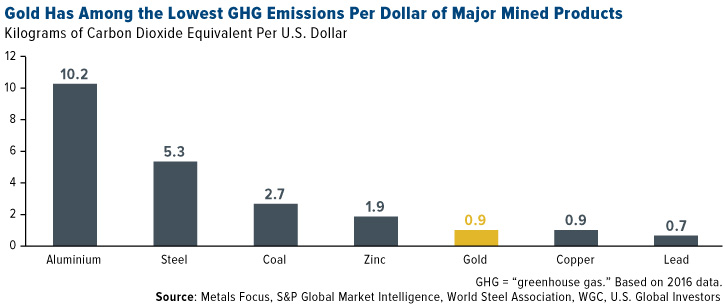
In a September report, the World Gold Council (WGC) pointed out that some investors are underexposed to gold. The gist of the study is that investors may assume they have adequate exposure to gold because they’re invested in a fund that tracks a broad-based commodity index. The problem with this assumption is that most major commodity indices have a relatively small weighting in gold, and so their gold exposure is much smaller than they realized.

Take a look at the tables above. The S&P GSCI, which tracks 24 commodities, has only a 3.37 percent weighting in gold. The Bloomberg Commodity Index is slightly higher, with a weighting of 12 percent. These percentages shrink even more when you consider that commodities in general represent a small portion of most investors’ portfolios.
“If you are buy-and-hold investor, if you are trying to create long-term strategies, the evidence overwhelmingly shows that gold is a more effective strategic asset than commodities alone,” explains the WGC’s director of investment research, Juan Carlos Artigas, who we had the opportunity to chat with recently.
To illustrate Juan Carlos’ point, look at the following chart. In the 20-year, 10-year and five-year periods through June 2019, gold outperformed all other commodities, including energy, industrial metals and precious metals. Despite this, gold may still be under-represented in some investors’ portfolios.

“The optimal weight for gold, or the amount of gold that can help investors get better risk-adjusted returns, is between 2 percent and 10 percent,” Juan Carlos says. This is mostly in line with U.S. Global Investors’ recommendation of a 10 percent weighting in gold, with 5 percent in bullion and the other 5 percent in high-quality gold mining stocks.
Gold-Backed ETFs at All-Time Highs
At the same time that gold is largely under-represented in many investors’ portfolios, some investors have been buying at a healthy clip. In fact, since the start of the most recent gold price rally, holdings in gold-backed ETFs have climbed to an all-time high. Holdings as of September stood at more than 2,855 tonnes, surpassing the previous high of 2,839 tonnes in November 2012.

Gold Mining Is Attractive From ESG Perspective
You may have heard of ESG investing—which stands for environmental, social and governance. This set of criteria has grown in importance among “socially conscious” investors over the past decade. In the U.S. alone, assets under management (AUM) in ESG-oriented funds and ETFs have more than doubled from approximately $40 billion in 2013 to $90 billion in 2019, according to Morningstar data.
The good news is that gold and gold mining look attractive from an ESG perspective. Gold’s “green credentials,” in fact, may be understated, according to a recent report by the Royal Bank of Canada (RBC). For one, owning physical gold—in coins, bars or jewelry—has absolutely no environmental impact and actually increases a portfolio’s ESG rating.
As for gold mining, the process gives off significantly less greenhouse gasses (GHG) on a per dollar basis relative to some other mined products, including aluminum, steel, coal and zinc. What this means is that gold has a much smaller “carbon footprint” than what some people might think.

Many mining companies are also working to meet some investors’ changing attitudes. IAMGOLD, for instance, is investing heavily in solar infrastructure, and its mine in Burkina Faso is the world’s largest hybrid solar/thermal plant, according to RBC. Newmont Goldcorp is moving forward with its “Smart Mine Initiative,” which uses optimizer software to maximize ore recovery and minimize waste. And Torex Gold has developed what it calls the “Muckahi Mining System,” which alleges to limit surface disruption and reduce the use of fossil fuels underground.
How to Gain Exposure to Gold
You could own physical gold, but a drawback is that it doesn’t yield or produce anything. Another way to get access is through stocks but it might be difficult to decide which companies to invest in.
One of the best ways to get exposure to gold, we believe, is with our U.S. Global GO GOLD and Precious Metal Miners ETF (GOAU). The fund provides access to companies engaged in the production of precious metals through both active and passive means.
Learn more about GOAU and the companies it invests in by clicking here!
All opinions expressed and data provided are subject to change without notice. Some of these opinions may not be appropriate to every investor.
The S&P GSCI Total Return Index in USD is widely recognized as the leading measure of general commodity price movements and inflation in the world economy. Index is calculated primarily on a world production weighted basis, comprised of the principal physical commodities futures contracts. The Bloomberg Commodity Index is made up of 22 exchange-traded futures on physical commodities. The index represents 20 commodities, which are weighted to account for economic significance and market liquidity.
